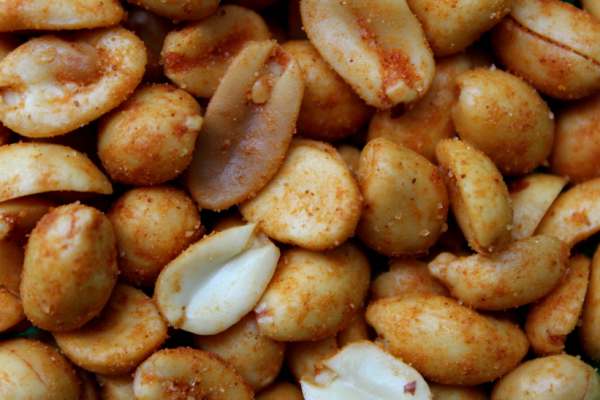
Ways to reduce sodium intake
Most of us are used to high amount of sodium in our food. Too much Sodium chloride intake increases risk for health problems like high blood pressure, edema and heart conditions. Too much sodium results in overweight! Even though we think we are under control the truth is our sodium intake is still remains high. Reason for this is, more than 75 percent of the sodium we eat comes from restaurant and packaged foods. If we prepare food at home, we know how much salt we have added to our own food. However, when we eat packed and restaurant food it makes it hard to control how much we eat, because it is already added to our food before we buy it.
Some of the recommended tips for controlling sodium intake are below:
Know your sodium limit !
The general guidance for sodium intake are:
- Healthy adults and teens age 14 and older need to limit their sodium intake to no more than 2,300 mg a day (about 1 teaspoon of salt).
- Some adults, including people with high blood pressure, need to limit their sodium intake to 1,500 mg a day.
- Children need no more than 1,500 to 2,200 mg a day of sodium, depending on how old they are.
- To eat less sodium, you don’t have to make lots of changes at once. If you cut back on sodium little by little, your taste for salt will change with time.
Check the label.
- Use the Nutrition Facts label to check the amount of sodium in foods. Try to choose products with 5% Daily Value (DV) or less. A sodium content of 20% DV or more is high.
- Look for foods labeled “low sodium,” “reduced sodium,” or “no salt added.”
Shop for low sodium foods.
- Load up on vegetables, fruits, beans, and peas, which are naturally low in sodium. Fresh, frozen, and dried options are all good choices.
- When you buy canned foods (like vegetables, beans, or fish), choose ones with labels that say “low sodium,” “reduced sodium,” or “no salt added.”
- Compare the sodium in prepared foods like bread, soup, and frozen meals. Choose the ones with less sodium.
- Limit processed meats – especially ones that are salted, smoked, or cured, like hot dogs, bacon, and deli meats.
Prepare your meals with less sodium.
- If you use canned foods that are not low in sodium, rinse them before eating or cooking with them. This will wash away some of the salt.
- Use unsalted margarine or spreads with no Transfats.
- Do not add salt to the water when you cook pasta or rice.
- Try different herbs and spices to flavor your food, like ginger or garlic.
- Take the saltshaker off your table.
- Use onions, garlic, herbs, spices, citrus juices and vinegars in place of some or all of the salt to add flavor to foods. Our recipes and tips can help!
- Drain and rinse canned beans and vegetables – this can cut the sodium by up to 40 percent.
- Combine lower-sodium versions of food with regular versions. If you do not like the taste of lower-sodium foods right now, try combining them in equal parts with a regular version of the same food. You will get less salt and probably will not notice much difference in taste.
- Cook pasta, rice, and hot cereal without salt. Add some flavors to your food.
- Cook by grilling, braising, roasting, searing, and sautéing to bring out the natural flavors in foods – that will reduce the need to add salt.
Order less salt food at restaurants.
- When you order at a restaurant, ask that salt not be added to your food.
- Choose low-sodium options when you can – like dishes that are steamed, broiled, or grilled.
Add more potassium to your diet.
- Eating foods with potassium can help lower your blood pressure. Good sources of potassium include potatoes, cantaloupe, bananas, beans, milk, and yogurt. Incorporate foods with potassium, like sweet potatoes, potatoes, greens, tomatoes and lower-sodium tomato sauce, white beans, kidney beans, nonfat yogurt, oranges, bananas and cantaloupe. Potassium helps counter the effects of sodium and may help lower your blood pressure.
Choose canned vegetables labeled “no salt added” and frozen vegetables without salty sauces.
- When you add these to a casserole, soup, or other mixed dish, there will be so many other ingredients involved that you will not miss the salt.
Control portion sizes.
When you cut calories, you usually cut the sodium too.
Similar to cultivating other good hobbies, make it a habit to eat less salt. It may taste bland initially, but you will get used to it. Once you start reducing sodium you will notice the change in your body for better.
References:
- Also see: https://healthylife.werindia.com/health-tips/reduce-salt-lose-weight
- http://sodiumbreakup.heart.org/
- http://www.eatingwell.com/
Image credit: https://www.needpix.com/photo/download/636068/peanuts-spicy-nuts-crispy-spicy-salt-cooked-nut-food-snack (Free for commercial use)
Author: Sumana Rao | Posted on: September 13, 2016
« Vending machine foods: How safe is your choice? Chikungunya Outbreak! »






















Write a comment